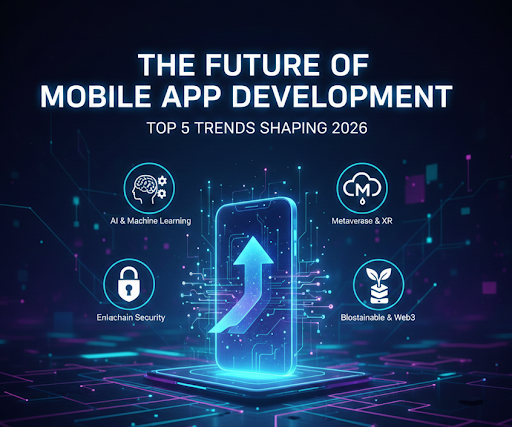Key Takeaways:
- The global app economy will reach $600 billion by the end of 2026.
- The wider mobile application market will reach $614.40 billion by the end of 2026.
- Mobile app downloads are expected to rise to 320 billion by the end of 2026.
- The cost of mobile app development varies widely based on several factors, including the apps’ complexity, app types, platform choices, location, and more.
- Average costs for app development range from $8000-$150,000+.
- India, the Philippines, and Vietnam are the cost effective regions for app development.
- These regions are known for their large talent pool, competitive hourly rates, and high English proficiency.
The mobile app development industry is evolving faster than ever before. It is shaping how people interact, work and play with modern mobile applications. The app development has evolved from fiction to reality. Once felt like science fiction is reality now! But, advancement is the only constant. It invites innovation and a smarter way of interacting with apps.
For building smarter, efficient and productive mobile apps, you need to have a few things in mind. Understanding the future of app development and having the right and skilled Mobile App Developers to bring your vision into reality.
Let’s step into the future and know the trends that are shaping mobile apps in 2026!
The Biggest Mobile App Development Trends to Watch in 2026
App development has accelerated rapidly alongside some of the most breakthrough technological advancements of the new century, including mobile devices, cloud computing and spread of 5G networks.
As we are getting more digitized, newer technologies like generative AI and machine learning are transforming how development teams build, test and deploy apps.
Let’s look up some of the biggest trends in app development and how they’re transforming software development.
1. Internet of Things (IoT) App Integration
The development of IoT applications is a trend that keeps extending the possibilities of what IoT applications can do based on data they gather and compute near a source leveraging edge computing.
IoT applications have been expanded across numerous industries including manufacturing, health-care, agriculture, transportation and retail; industries focused on improved efficiencies and real time insights.
The organizations who are building applications in the IoT space are establishing scalable, secure solutions, utilizing powerful IoT functions and still delivering solutions that allow security, functionality and scalability.
2. 5G Technology Integration
As 5G technology has unlocked new potential for mobile app development technologies. According to the study, the global total of 5G mobile subscriptions are more than 2.17 billion by 2024 and is predicted to be 5.56 billion subscriptions by 2030, therefore making 5G the world’s fastest, most adaptable mobile network technology.
5G offers a higher data transfer speed up to 10Gbits in tests than 4G and significantly lower response times in only a few seconds. The enhanced abilities of 5G allow for more users on the network, plus a broad range of application uses, like extended reality, autonomous vehicle capability, clinical trials across a variety of geographic locations, and fixed wireless access to in-home internet via local area networks.
Lastly for the business world, 5G mobile app development will produce significantly improved app performance, along with cloud compatibility and better, more efficient user-interaction experience.
3. Artificial Intelligence (AI) and Machine Learning (ML)
Mobile apps rely on user behaviour, repetitive tasks which significantly enhance user experience. The incorporation of AI and ML into mobile app development allows the app to learn, reason, and adapt to the data, providing a more intelligent, customized, and efficient user experience.
Did you know? In 2024, the global AI industry reached just under $190 billion, and AI functionalities have integrated into over 70% of mobile apps. To create mobile apps with these AI and ML capabilities, we can use frameworks like TensorFlow Lite, Core ML, ML Kit, and ONNX Runtime Mobile.Developers can build apps that analyse the behaviour, predict needs, and offer on-time data.
Moving ahead to 2026, the next generation of custom AI applications will be human AI collaboration, enhanced AI security, agentic and autonomous AI. Overall, the businesses who are adopting AI and ML technologies in mobile app development are no longer an option, but it’s a future which enables data driven experiences and strengthens brand loyalty.
4. Augmented Reality (AR) and Virtual Reality (VR)
AR and VR are going lala in many industries, this concept is now not limited to gaming industry but it has wide spread to healthcare, education and retail.
By 2026, AR and VR will become a mainstream part of the future of application development. Businesses can use it for virtual try-ons, product demos, and remote training.
Integrating AR/VR can help an app stand out in the crowded market, providing a unique selling point and a strong competitive edge.
5. Low-code/No-code Development
Low code and No code development are used for visual, drag and drop interfaces to accelerate crafting applications, but they sometimes differ in flexibility.
No code is for users with no coding knowledge, mostly rely on pre built templates and visual logic for common apps. Low codes require some level of coding knowledge and allows for customization with manual code to craft complex and integrated applications.
There are some great examples who utilize low code platforms like Zoho Creator, Microsoft Power Apps, to build custom internal tools for various purposes such as field service management, inventory tracking, and project management.
Conclusion
The future ready application relies on three aspects, knowingly intelligence, speed, and trust. Their products will have a competitive edge, mainly focused on AI, edge first product design and immersive experience focus, these apps rank at the top of the app store.
Whether you’re a developer, entrepreneur, or tech savvy, these trends signal a future where innovation is faster, smarter, and more human centric than ever. If you want an app that stays relevant in this next evolution of mobile tech, now is the time to act, update and innovate.

